
A review of this winning piece of pottery by Grayson Perry:The surface of the pottery is adorned with popular negative cultural references. Images of child abuse, sexual fantasies, physical attacks, and commercial logos and iconic consumer culture, swirl and intertwine, expressing a frightening, difficult yet honest, vision of the world.His concept and realisation is stark. Perry’s modern vision of society in the 21st Century is traditionally depicted yet goes against the grain of our current expectations of how a ‘vase’ should be decorated. Perry has crafted a traditional object of beauty; physically and symbolically turned it into a product and presentation of modern consumerist ideology.But what is important to keep in mind when studying Perry’s work is that his acceptance into the Turner prize comes from his ability to graft embedded cultural art and craft onto decorative, morphological, architecture in a seemingly Gestalt manner.Perhaps it’s true function ~ like all art ~ is to cause discourse.
I have taken this wonderful article by Dr. Darkmoon and added more illustrations and quotes to back up her points. Some of the imagery may be offensive so stand forewarned however that seems to be the point of most modern art. "To cause discourse"
This piece covers much more than art itself. It asks the very important question:
This piece covers much more than art itself. It asks the very important question:
If you can con people into buying shit,
can you also con them into evil wars
in the Middle East
and mass cultural suicide
in their own homelands?
can you also con them into evil wars
in the Middle East
and mass cultural suicide
in their own homelands?
By Dr Lasha Darkmoon
Occidental Observer
September 9, 2009
September 9, 2009
Reposted September 19, 2010
Part 1
 Waterhouse, The Lady of Shalott, 1888.
Waterhouse, The Lady of Shalott, 1888. Art as it used to be, when painters knew how to paint.
This would now be considered kitsch.
"Never before have so few been in a position to make fools, maniacs or criminals of so many." ~ HG Wells, The Shape of Things to Come.
It was a rude awakening for a nine-year-old artist.
About a decade later, I asked myself was art was all about. One day I found this sentence in a biography of Burne-Jones, and I jotted it down in my diary and pondered it for a day or two,
"I mean by a picture a beautiful romantic dream of something that never was, never will be ~ in a better light than any light that ever shone ~ in a land no one can define or remember, only desire ~ and from forms divinely beautiful."When I read that sentence, I almost fainted. I was a sensitive girl, given to fits of swooning at the slightest opportunity. It was then I realized there was no real difference between poetry and painting, between painting and music. All, in their own ways, sought for God~ albeit a God who might not exist ~ but a God nonetheless. God was beauty. God was longing. God was the fire in the rose.
That's what I thought then. I was young and foolish.
Art, I found out later, was about making money. Organized Jewry taught me this. Art dealer Paul Rosenberg says, "A painting is only beautiful when it sells." Jewish president of the Marlborough Gallery, Frank Lloyd, confirms this: "There is only one measure of success in running a gallery: making money."
The question we need to ask is: Who runs the Art Market and how did it become a freak circus?
Art Should Make You Miserable
Let's take a little trip round the art world with Israel Shamir. Mr Shamir, after all, is not only well-informed about art but is also a tour guide in Jerusalem. He agrees with me about the sacral nature of art. "No art without Christ," he says. By "Christ" he means much more than the historical Jesus. He means the Logos, or Christ Principle, the rule of law in a divinely ordered universe.
Since Darwin and Freud, there has been a complete "revaluation of all values." Everything has been turned upside down. We can mostly attribute this parlous state of affairs to the machinations of organized Jewry, in particular to a group of revolutionary thinkers known as the Frankfurt School.
(For a detailed introduction to the ideas of these neo-Freudian Marxists, most of whom were Jewish refugees from Hitler's Germany who fled to America, see Chapter 5 of Kevin MacDonald's The Culture of Critique).
To learn more of this extremely successful endeavour, please go to:
The Frankfurt School: Conspiracy to Corrupt
Just as one of these Frankfurters, Theodor Adorno, set out to destroy Western music, assuring the world that atonal music was a good thing because it was discordant and ugly, others in the group set out to destroy art and push it to its reductio ad absurdum: lights going on and off in an empty room, unmade beds with condoms and bloodstained panties strewn around, and sealed cans containing the artist's own excrement.
Another of these mental giants, Walter Benjamin, believed that the purpose of art was to make people as miserable as possible, for pessimism was an essential preliminary to world revolution.
"To organize pessimism,"
he pointed out portentously,
"means nothing other than
to expel the moral metaphor
from politics."
Benjamin succeeded only too well
in making himself miserable.
He committed suicide.
he pointed out portentously,
"means nothing other than
to expel the moral metaphor
from politics."
Benjamin succeeded only too well
in making himself miserable.
He committed suicide.
Marxist revolutionary Willi Munzenberg made no bones about his mission in life. It was to destroy Western civilization. No kidding. To accomplish this, he said, the Frankfurters would have to:
It will soon become clear to you, if you are a struggling artist, that the art world is dominated by Jews who are only too anxious to bring about this hell on earth. Their control over what now passes for art is as tentacular as it is terrifying."organize the intellectuals and use them to make Western civilization stink. Only then, after they have corrupted all its values and made life impossible, can we impose the dictatorship of the proletariat".To summarize:
Let's create a culture of pessimism. Let's make Western civilization stink. Let's create a godless world and drive people to despair.
Let's corrupt society's values and make life impossible. In short, let's create hell on earth.
Art has morphed into Anti-Art.
"For Jews," Israel Shamir points out, "their group interest lies in undermining visual art, for they can't compete with it. Even deeper group interest is to undermine Christianity, their main enemy."
To undermine.
To corrupt.
To create discord.
To drive crazy.
To destroy.
Verbs to remember.
To corrupt.
To create discord.
To drive crazy.
To destroy.
Verbs to remember.
Let's begin our tour of the art world, with Israel Shamir as our guide, and try to gain an insight into what is going on.
Gallery Hopping With Mr Shamir
One day, Shamir finds himself in the Basque capital of Bilbao in Spain. He has come to check out the museum of modern art built by the fabulously rich (Jewish) Guggenheim family.
The biggest building in Spain, the Guggenheim Museum impresses Shamir profoundly~ it's like something out of a science-fiction movie ~ but once he steps inside the building he is acutely disappointed.
Hey, what on earth is all this junk? Pieces of corrugated iron lying around like in a scrap yard. Rusty iron plates in one corner. Video screens blinking away inanely. Bare geometric forms. And, believe it or not, an entire floor devoted to a collection of Armani suits. Boy, I'm outta here! Shamir mutters to himself, making a beeline for the Exit.
 Guggenheim exhibit from behind the scenes, the close up, the final product.
Guggenheim exhibit from behind the scenes, the close up, the final product.It looks like great fun, a memorable experience, but is it art?
And what does he do next? He hops on a plane to Venice, and now we see him poking around the famous Biennale Museum, trying to make sense out of a collection of trashed cars on display. Mopping his brow feverishly, he needs to sit down to collect his wits.
No, don't sit there, sir ~ those chairs are a precious work of art!
 Jake and Dinos Chapman'a Fucking Hell recently shown at the Biennale.
Jake and Dinos Chapman'a Fucking Hell recently shown at the Biennale.An obscenity to any Christian or Muslim, ugly to all.
You want to read a good book, Mr Shamir, to take your mind of all this junk? No problem. Here's a bookcase full of books. Help yourself. Or rather, don't help yourself! This bookcase, crammed with moldy old books, is also a sublime work of art! Yes, all the way from sublime, artistic Israel!
One might have thought that, after suffering all these disappointments, Mr Shamir would have packed it in and gone back to Jaffa, determined never to set foot in an art gallery again.
But no, a glutton for punishment, our art guide now decides to visit a museum in Amsterdam where he is confronted by a collection of decomposed pig trunks. To his astonishment, he learns that a cadaver immersed in formaldehyde, on display in this same museum, has been purchased for $50,000 by a rich American. Wow, a corpse collector!
His disillusionment is total when, on visiting Copenhagen, he finds himself in the church of St Nicholas. Being a convert to Christianity, maybe he goes in there to pray. If so, he is saddened to have his mind polluted by the pictures he sees on the walls of that venerable old church.
Here's a color photograph of a naked old woman, withered and sick. And here, right next to it, is a huge blown-up picture of the female genitalia. And what's this? Oh, nothing to worry about! Just a photo of a couple of guys having oral sex.
Hey man, c'mon! This is a healthy and natural act! What better place for the celebration of joyous pagan sexuality than a Christian church?"Whatever they proclaimed as art, was art," Shamir concludes ruefully. "In the beginning, these were works of some dubious value like the 'abstract paintings' of Jackson Pollock. Eventually we came to rotten swine, corrugated iron, and Armani suits. Art was destroyed."
The Jewish Connection
So what does all this have to do with the Jews? Plenty. If you want to play that fascinating game known as Cherchez le Juif, let's continue our tour of the contemporary art world.
You will meet many artists, quite a few of them pliant and accommodating non-Jews, who are prepared to jump through the hoops set before them by their Masters: the ubiquitous Jews lurking in the shadows.
The men who call the shots.
The men with the money.
The men whom the artist must learn
to please and flatter if he hopes
to get ahead and become rich and famous.
The men with the money.
The men whom the artist must learn
to please and flatter if he hopes
to get ahead and become rich and famous.
The ambitious artist will find himself drawn inevitably into a Jewish world.
He will learn to pepper his conversation with Yiddish phrases.All this has been done by goy artists. The proof for these claims can be found here in this enormous archive of art information. I have drawn upon it heavily.
He will never breathe a word of criticism against Israel, no matter what atrocities that country is in the process of committing.
He will sneer at Muslims, the Qur'an and the Palestinians.
He will find it pays dividends to insult Christianity, the religion of his forefathers.
He will mention the Holocaust, whenever possible, with moist eyes.
He will paint as many pictures of Auschwitz as he can, preferably with chimneys belching black smoke.
Even the great Picasso knew he was appeasing the Jews when he embraced his friend Pierre Daix and confided in a low voice, "To think that painters once thought they could paint The Massacre of the Innocents!" He was clearly echoing or anticipating Adorno's
"There can be no poetry after Auschwitz." If there can be no poetry after Auschwitz, there can be no art either ~ certainly not Christian art.Andy Warhol knew better than most how to ingratiate himself with the Jews. His 1980 series, "Ten Portraits of Jews of the Twentieth Century," features ten portraits of what Warhol referred to as "Jewish geniuses," one of whom was Israeli Prime Minister Golda Meir ~ the "genius" who said there were no Palestinians, adding with her famous flair for the witty phrase: "How can we return the occupied territories? There is nobody to return them to."
Another "genius" was Sigmund Freud, whom Kevin MacDonald has described as having perpetrated the greatest scientific fraud of the 20th century ~ a fraud that was very useful in constructing the culture of Western suicide.
Warhol's portrait of Sigmund Freud, from his 'Ten Portraits of Jews of the Twentieth Century' series. It was Freud who sexualized all psychological issues and brought them to the level of Oedipal art or poor potty training.
Warhol seems to have put his considerable charm to work with Henry Geldzahler, curator of the Metropolitan Museum of Art ~ an influential Jew who happened, like Warhol, to be homosexual. "Although they were never lovers, the relationship became intimate," we are assured by one of Warhol's biographers. "Andy spoke to Henry on the phone every night before he went to sleep and every morning as soon as he woke up."
I am not saying that Warhol and Geldzahler were lovers, though others have said so. That's of no interest to me.
All I'm suggesting is that Warhol, a notorious opportunist, found it helped his career to cultivate the Jews. His appeal, in the words of film critic Carrie Rickey, was to the "synagogue circuit."
Grayson Perry, 46, won the Turner Prize for his pots in 2003, accepting it dressed as his alter-ego Claire. He lives in London with his wife, a psychotherapist, and his 14-year-old daughter.
Transvestite potter Grayson Perry ~ here he is receiving the Turner Prize for his inspired pots~ knew his success depended less on his talents than on the advertising genius of his plutocratic patron Charles Saatchi. When he accepted the prize, wearing a fantastic lilac frock of his own creation, he said “It’s about time a transvestite potter won the Turner Prize!”There is a review of the winning piece at the beginning of this article. It is the perfect example of art as mental and visual pollution, despite his obvious talent as both artist and potter.
His views on art and society are refreshingly unpretentious. He is happily married to a psychotherapist with whom he has a 14 year old daughter. His wife Philippa has joked that his obsession with dressing in women’s clothes could be worse…”It could be football!”“To have men in frocks is disturbing for people, but in fact most of them are straight, hetero people with marriages and kids,” says Perry.
He says he is horrified by the “spiritual bankruptcy” of modern society, and its focus on appearance. “There is more to attractiveness than who is looking in the mirror. Sexiness is a terrible tyranny.” Indeed he is a funny, gifted, endearing, original thinker.
Grayson is well aware, moreover, that Islamophobia can always be relied on to win friends and influence people in the Judeocentric art world.
"The reason I haven't gone all out to attack Islamism in my art," he confides fearlessly, "is because I feel real fear that someone will slit my throat."Avoiding controversial political statements in the interests of discretion, Perry decided to devote his life to producing ceramic pots depicting "explicit scenes of sexual perversion." It must have been a tough decision.
RB Kitaj's Passion (1940–45): Cross and Chimney
Entrance through the Gate Exit from the Chimney by Joseph Bau
Non-Jewish artists such as Anselm Kiefer, Christian Boltanski and Christopher Williams have been almost as prolific in their production of Holocaust paintings as Jewish painter RB Kitaj, a man whose obsession with Auschwitz has often been noted. "The chimney in a Kitaj painting," art pundit Juliet Steyn informs us, "functions as an indictment on Christianity." Translation: After Auschwitz, who needs Golgotha?
As for Andres Serrano with his Piss Christ and Chris Ofili with his dung-bedecked Holy Virgin Mary ~ the Madonna surrounded by pictures of the female genitals cut from pornographic magazines ~ both these emotionally immature artists were clearly aware that contempt for Christ and his mother is extremely pleasing to the Talmudic Jews.
To see more work that exhibits the spiritual level of such artists, here is a link to Serrano's latest art show. The show consists of just that. Sixty six 8 feet tall photographs of feces, too disgustingly realistic for me to even consider posting. Again that Jewish fascination with bodily waste raises its ugly head. Here is a n interview/review for your reading pleasure.
"The genial renegade is back, fulfilling his desire to do, in his words, "something that would provoke even me" ~ namely, shooting 66 different piles of doo-doo dumped by as many animals, blown up to eight feet high and ready to hang on the walls of the Yvon Lambert Gallery.
Serrano used his own caca for the first picture; for the second, he recruited Luther, the Dalmatian who is sitting at his feet as we talk. A benevolent God once again intervened. "I saw a dog face in the dog shit! Then I became less nervous. As I started to make the work, I felt a close affinity with Goya and the work he did at the end of life ~ the underworld creatures. I too started to see figures and creatures in this work."
"This show is very conceptual," he says. "I realized how ingrained the word shit is in the English language. My work is all about language." (And of course, when you think about it, how much of the power of Piss Christ was derived from its title?)
If it's possible, for just a minute, to forget what you're looking at, maybe that's because "shooting so close up, it becomes monumental ~ bigger than life. It's so small, but when I make it so big, you lose all sense of what it is. Many people are quite surprised at the beauty and seductive quality of the work. After a while, it just becomes abstractions."
Still, when it comes to certain subject matter, 66 is a lot of images. "Heroic Shit is one of my favorites ~ it looks like the raising of the flag in Iwo Jima. Hieronymous Bosch Shit ~ I know this is a winner! It looks like a bird, like a Bosch creature. Burro Shit I and II ~ it's a diptych."
"You get used to working with shit fast. I have the hard part ~ I have to go in there and work with piss and shit. For the audience, it's a very clean experience ~ just an aesthetic pleasure."
Serrano says he thinks he was born to do this work. "I just saw Batman ~ Ledger is a true anarchist. I would say that I'm one of them, too ~ a true anarchist doesn't give a fuck. I'm very lucky that I create work that finds collectors. I think this is great work ~ it's not only beautiful, it's unprecedented.
"My ego as an artist says I can make anything look good, even shit. The show is also very basic ~ in a way, what I'm saying is that we all think we have the best shit. If you want to see some real shit, check out my shit!" he says, beaming. "I got the best shit in town."
THIS IS WHAT SELLS!

Chris Ofili's 'Holy Virgin Mary'. How very Talmudic
to have this Disney-esque image of the Madonna
covered in animal feces.
to have this Disney-esque image of the Madonna
covered in animal feces.
Nigerian-born Chris Ofili's Holy Virgin Mary, from the collection of Charles Saatchi, an influential Jewish art collector. The painting is described as "a carefully rendered black Madonna decorated with a resin-covered lump of elephant dung. The figure is also surrounded by small collaged images of female genitalia from pornographic magazines." The painting caused a public uproar and media frenzy when exhibited at the Brooklyn Museum of Art as part of the Sensation exhibition of Saatchi's collection in 1999.
Christians were outraged over a crucifix in a Catholic church that they say shows an image of genitalia on Jesus. Critics take issue with what appears to be a large penis covering Jesus’ abdominal area. The artist insists the portion of the crucifix in question is meant to be Jesus’ abdomen “showing distension” ~ not a penis.
Artists? These men are more like circus dogs, trained to jump through hoops and beg for bones from their masters. It's the men with the money, the Saatchis and the Guggenheims, who crack the whip.
Part 2
September 20, 2009
I hate to tell you this, but if you like modern art there has to be something radically wrong with you. To feel hostile towards it is as natural as being repelled by incest.
Modern art is out to corrupt you.
If it doesn't do this, it will have failed to achieve the primary purpose of its elitist promoters.
It will have failed to undermine traditional values.
It will have failed to produce a "culture of pessimism."
It will have failed to destroy the sacral core of life.
It will have failed to poison your mind.
It will have failed to give you the sickness unto death.
It will have failed to make you what Big Brother finally managed to make Winston Smith in Orwell's Nineteen Eighty-Four: a mindless zombie.
The Wheelers and DealersIt will have failed to produce a "culture of pessimism."
It will have failed to destroy the sacral core of life.
It will have failed to poison your mind.
It will have failed to give you the sickness unto death.
It will have failed to make you what Big Brother finally managed to make Winston Smith in Orwell's Nineteen Eighty-Four: a mindless zombie.
That the Jews dominate the art world,
as they dominate the mass media
and every other area of influence,
is the best-kept secret
of the twenty-first century.
One is not supposed to mention this.
It is anti-Semitic to do so.
as they dominate the mass media
and every other area of influence,
is the best-kept secret
of the twenty-first century.
One is not supposed to mention this.
It is anti-Semitic to do so.
In 1989, an erudite academic volume appeared called Sociology of the Arts. In it the authors discuss who is who in the art world. "Blacks, Orientals, and persons of Spanish origin constitute about 7 per cent of the art audience," the book informs us helpfully. So what about the other 93 per cent?
What ethnic group owns most of the art galleries?
Who are the museum curators?
Who are the art historians? Who are the art critics?Who publish the magazines in which art is reviewed?
Who determine what is good art and what is rubbish?
Who are the dealers and big collectors?
Who run the auction houses?
Who set up the art competitions and raise the prize money? Who appoint the judges?
Who are the judges?
Not a word.
Total silence.
Scary, isn't it?
Total silence.
Scary, isn't it?
As far back as 1930, it was noted by French author Pierre Assouline:
"According to dealer Pierre Loeb, four art dealers out of five are Jewish, as are four out of five art collectors. Wilhelm Unde added art critics to this list."In 1973, it was estimated that 80 per cent of the 2500 core "art market personnel" ~ dealers, curators, gallery owners, collectors, critics, consultants and patrons of the arts ~ were Jewish.
In 1982, Gerald Krefetz (Jewish) let the cat out of the bag even further. "Today, Jews enjoy every phase of the art world," he admitted. "In some circles, the wheelers and dealers are referred to as the Jewish mafia."
Writing of his experiences in New York City, Jewish author Howard Jacobson revealed that art critic Peter Schjedhal had told him, "Just about every gallery we go into is run by a Jew. Even the women gallery owners whose wine we absorb are Jewish."
In 2001, ARTnews listed the world's Top Ten Art Collectors. Eight of them were Jews.
Ponder these staggering statistics:
A people who constitute 0.2% of the world's population make up 80% of the world's richest art collectors. Out of every thousand people in the world, roughly two are Jews. To be precise, one in every 457 people are Jews.
Yet go to a conference at which 1000 of the world's wealthiest art collectors have gathered and you will find, to your amazement, that 800 of them are Jewish! Phenomenal, isn't it?
The art world is so densely populated with Jews that one way to get away from the goyim, if you are Jewish, is to take up art. That way, with any luck, you won't bump into a non-Jew for days! In 1996, Jewish art historian Eunice Lipton confided somewhat tactlessly that the only reason she became an art historian was that she wanted to hang out exclusively with Jews. "I wanted to be where Jews were ~ that is, I wanted a profession that would allow me to acknowledge my Jewishness through the company I kept."
On the face of it, art history would seem to be a gentile profession, if only because the study of Christian art was its hub and center. And yet the field was filled with Jews. One might even say it was shaped by them.
Eunice Lipton was doubtless thinking of the great historian of Renaissance art, Bernard Berenson, whose influence has been seminal. Berenson once described himself as "a typical Talmud Jew" who longed to drop "the mask of the goyim" ~ hardly, one is tempted to think, a fit interpreter of Christian art to the hated gentiles!
Though he had converted to Christianity in 1885, here we see him, almost sixty years later in 1944, writing an "Open Letter to the Jews" in which he warns them about "envious Christians" who would persecute them "even if you were innocent as the angels." To my mind, this sounds more Talmudic than Christian.
Art historian Lipton probably also has in mind ~ when she says she wanted to live in a predominantly Jewish atmosphere ~ the two most illustrious art critics of the twentieth century, Harold Rosenberg and Clement Greenberg.
Like Berenson, Greenberg appears to have had a distinctly Talmudic cast of mind. Convinced of Jewish superiority, he once remarked,
"The European Jew represents a higher type of human being than any other yet achieved."Both these influential critics, Rosenberg and Greenberg, were members of the Frankfurt School and helped to reshape the aesthetic perceptions of the gentile masses.
It is impossible to over emphasize the need to learn about this infamous school of thought if one wishes to begin to comprehend what has happened to the Western mind. This is the source of the downfall of the White Western people. It is also the source of the "politically correct movement" used as a tool of social engineering.
Bending Art to Jewish Abilities
All art henceforth was to be "Jewish".
It would break free from its Christian roots.
It would break free from its Christian roots.
Whatever Jewish artists were good at, that would be the art of the future. If Jews were no good at drawing, good drawing would no longer be necessary.
Representational art was out, abstract and conceptual art was in.
Actual unmade beds, not pictures of them, now became works of art.
Marcel Duchamp's famous urinals ~ bought in a store and transported to an art gallery where they were magically transformed into works of art.
Cans stuffed with the artist's own excrement.
Photos of crucifixes stuck in glasses of the artist's own urine.
Marcel Duchamp's Fountain, photographed in 1917 by Alfred Steiglitz, an early 20th-century Jewish photographer and promoter of modern art.
“It does not take much stretching of the imagination,” gushes Calvin Tomkins, art critic of the New Yorker, “to see in the urinal’s gently flowing curves the veiled head of a classic Renaissance Madonna or a seated Buddha.”
A modern day pretender to the throne of pissoire fame.
"Preparation of these items places no demand on artistic abilities. They can be done by anybody," Israel Shamir points out, adding somewhat cuttingly,
"Such art is perfectly within Jewish capabilities."
In order to succeed in this difficult profession, the visually challenged Jews had to "bend art to fit their abilities."
It is as if, unable to excel at athletic prowess,
the Jews had somehow managed
to gain control over the Olympic Games
and decreed that, from now on,
sprinting and marathon running
were no longer important.
What really mattered
was winning the sack race
or the Spitting Competition
~ accomplishments,
which Jews were particularly good at!
the Jews had somehow managed
to gain control over the Olympic Games
and decreed that, from now on,
sprinting and marathon running
were no longer important.
What really mattered
was winning the sack race
or the Spitting Competition
~ accomplishments,
which Jews were particularly good at!
"The Jews were extremely ill equipped for their conquest of Olympus," Shamir instructs us. "For many generations, Jews never entered churches and hardly ever saw paintings.
They were conditioned to reject image as part of their rejection of idols." In short, the Jews were visually handicapped.
Trained in Talmudic dialectics, they were marvelous with words. They had a verbal IQ of 130. Their IQ for patterns and pictures, however, was dismally low: only 75.
The Jews of course don't wish to acknowledge this.
To suggest that they tend to make lousy artists is anti-Semitic.
If Jews didn't make more of a splash as artists in past ages, it is argued, it was because they were "held back" by their Christian oppressors.
Unfortunately for the Jews, the great Talmudist Berenson will have none of this argument.
To suggest that they tend to make lousy artists is anti-Semitic.
If Jews didn't make more of a splash as artists in past ages, it is argued, it was because they were "held back" by their Christian oppressors.
Unfortunately for the Jews, the great Talmudist Berenson will have none of this argument.
"The Jews have displayed little talent for the visual,"
he states tersely, "and almost none for the figure arts."
he states tersely, "and almost none for the figure arts."
How, then, you might wish to know, are there so many Jewish artists around nowadays? To what can we attribute this fantastic efflorescence of sudden Jewish pictorial genius?
The answer, we are told, lies in Jewish networking and hustling: Jewish predominance in the mass media, Jewish economic dominance of the art world, Jewish power, Jewish money."
How Anyone Can Be Famous
Andy Warhol once said that everyone in the future will be "world-famous for fifteen minutes." What he failed to point out was that almost anyone, including the village idiot, can be made into a celebrity with the help of public relations.
All it takes is constant attention in the mass media. Charles Saatchi, advertising mogul and art collector extraordinaire, spells it out:
"An unknown artist's big glass vitrine holding a rotten cow's head covered by maggots and swarms of buzzing flies may be pretty unsalable. Until the artist becomes a star. Then he can sell anything he touches"
Damien Hirst, 'A Thousand Years' (1990).
Richard Lacayo of Time Magazine: “A Thousand Years is a large glass box in which real maggots hatch into flies that appear to feed on blood from a severed cow’s head.” Charles Saatchi and Hirst had a "symbiotic relationship" as collector and artist from about 1992–2003.
How does one become a star?
Who gives the Emperor his new clothes?
Who helps to suggest he is remarkably well dressed?
Who gives the Emperor his new clothes?
Who helps to suggest he is remarkably well dressed?
An unmade bed is transformed into a consummate work of art once it is bought by Charles Saatchi and placed in a prestigious art gallery. The artist acquires a mystique created out of the power of suggestion. You must be a genius if everyone is raving about you and your unmade bed. Mass hypnosis does the trick. Advertising and persistent persuasion work wonders. See here and here and here.
Let me ask you a question.
If someone tried to sell you his excrement for $10, would you buy it? Probably not. Well, consider this: on May 23, 2007, a can labeled Artist's Shit, purportedly containing the excrement of artist Piero Manzoni, was sold at Sotheby's for €124,000 (US$ 180,000).
How is it done?
Is a can of shit worth its weight in gold?
It obviously is ~
if people are fighting to buy it.
Is a can of shit worth its weight in gold?
It obviously is ~
if people are fighting to buy it.
A MUCH LARGER QUESTION:
If you can con people into buying shit,
can you also con them into evil wars
in the Middle East
and mass cultural suicide
in their own homelands?
Nothing easier.
It's being done right now.
can you also con them into evil wars
in the Middle East
and mass cultural suicide
in their own homelands?
Nothing easier.
It's being done right now.
Talent helps, but is it essential?
You will be surprised to learn that some Jewish artists, despite Berenson's sweeping dismissal of their visual abilities, are actually quite good at painting.
For example, Modigliani and Chagall.
Shamir attributes some of their excellence, however, to the influence of Christianity. These two Jewish artists became Christians. This helped, Shamir thinks, to make them good painters.
At least they had something to say now. Life had taken on a new meaning. They weren't just scratching their existential sores and whining "God is dead!"
On the other hand, there were other artists who remained firmly within the Jewish camp and managed to distinguish themselves: notably, Pissarro (impressionist), Soutine (expressionist), Max Ernst (surrealist), and Tamara de Lempicka (art deco).
 Three paintings by Tamara de Lempicka.
Three paintings by Tamara de Lempicka. A preponderance of her art was lesbian in content and context.
To succeed as an artist in the new milieu, it helped if you were Jewish. Thus both Frida Kahlo and Gustav Klimt arguably owed their initial success to the fact that everyone thought they were Jewish.
They were not, but somehow managed to give that impression.
The important thing to remember in all this is that artistic talent had become, strictly speaking, non-essential.
It helped, but promotion by a good publicist helped more. The artist had to be a showman rather than a skilled craftsman. Neither Tracey Emin (patchwork quilt) nor Damien Hirst (shark preserved in formaldehyde) found it necessary to create their own works of art.
Cheap manual assistants were often hired to do this for them.
The vital thing in their art was the original concept.
The end product was of secondary importance.
The end product was of secondary importance.
Tell Me Something Beautiful is a patchwork quilt stitched up entirely by eight-year-olds from Ecclesbourne primary school, London, with Emin in the classroom offering advice. When the school wanted to sell the quilt for £35.000 ($60,000) to an art dealer, Emin threw a fit and threatened legal action, demanding the quilt be “returned” to her at once.
'The Physical Impossibility of Death in the Mind
of Someone Living' by Damien Hirst (1991).
of Someone Living' by Damien Hirst (1991).
Saatchi sold this work to collector Steven Cohen for $12 million, who in in turn donated it to the Museum of Modern Art.
The successful contemporary artist needs to be a person devoid of moral scruples. Confidence trickster, hustler, prostitute, pimp, he needs to mix with the right crowd and know whom to cultivate.
"The artist who would be known," wrote the great folklorist Joseph Campbell, "has to go to cocktail parties to win commissions, and those who win them are not in their studios but at parties, meeting the right people and appearing in the right places."Campbell was later accused of anti-Semitism, but Jewish artist Julian Schnabel backs up Campbell's claim.
"Much time is spent nurturing liaisons with creatures of the art world," he notes gloomily. "There is no time for friendship. Later, there is no capacity for it."
How does a really talented artist succeed in such a rat race?
Prostitution in art....
The difficulty to execute such intricate work must have been monumental in scope! A two year old could do as well. Painter Helen Frankenthaler had to sleep with art critic Clement Greenberg, but it was worth it: Greenberg gave her good reviews.
I do not see high art in this. It is no better than a Jackson Pollack in terms of skill.
In otherwords, it was who Willem de Kooning knew. In fact, for success, de Krooning let his wife Elaine bed down with art critic Harold Rosenberg, but it was worth it: Rosenberg gave de Kooning good reviews. It seems sex can promote anything, doesn't it?
Pollock had to pleasure nymphomaniac Peggy Guggenheim, but it was worth it: her patronage helped to get Pollock good reviews. Pollock famously said of his plutocratic patroness: "To fuck her, you'd have to put a towel over her head. And she did want fucking." But the sacrifice was obviously worth it. After all, her daddy owned the Guggenheim Museum.
None of these artists slept around for love. They did it for money.
"Incestuous collusion, mutual back-scratching, under the table wheeling and dealing, nepotism and clique allegiance are intrinsic principles of the modern art world," art expert Sophy Burnham concludes ruefully.
That's how it is. C'est la vie! It's so heartbreaking you have to laugh.
If you wish to succeed as a modern artist,
be prepared to lie and cheat,
to be a confidence trickster and sexual exhibitionist,
to flatter your Jewish patrons
and churn out Holocaust paintings to please them,
to sing the praises of Israel
and vilify the Palestinians,
to knock Islam and the Qur'an
and show contempt for Christianity.
Unless you are Jewish,
you must lose all allegiance
to your people, your religion,
or your traditional culture.
be prepared to lie and cheat,
to be a confidence trickster and sexual exhibitionist,
to flatter your Jewish patrons
and churn out Holocaust paintings to please them,
to sing the praises of Israel
and vilify the Palestinians,
to knock Islam and the Qur'an
and show contempt for Christianity.
Unless you are Jewish,
you must lose all allegiance
to your people, your religion,
or your traditional culture.
Be prepared to prostitute yourself if you're a woman or pimp your wife if you're a man.Let art critic Clement Greenberg have the last word:
Be prepared to do a Piss Christ like Andres Serrano or a pornographic Holy Virgin Mary like Chris Ofili.
Be prepared, like Grayson Perry, to dress up as a woman and produce sexually perverted pots.
Be prepared to pull a paper scroll out of your vagina like Carolee Schneemann.
Be prepared, like Vito Acconci, to titillate a jaded public by masturbating for them in a prestigious art gallery ~ and calling it 'art'.
Leonardo must be turning in his grave.
"I've decided the kind of people attracted to art are often psychopaths. You can quote me on that."
He should know.
Dr. Lasha Darkmoon (email her) is an academic, age 31, with higher degrees in classics. A published poet and translator, she is also a political activist with a special interest in Middle Eastern affairs. 'Lasha Darkmoon' is a pen name.
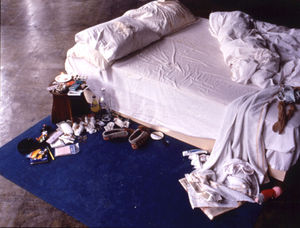



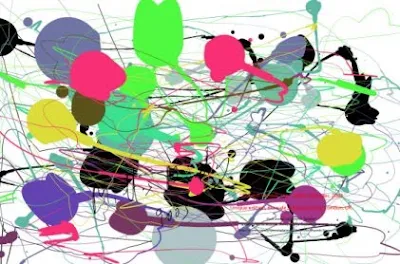
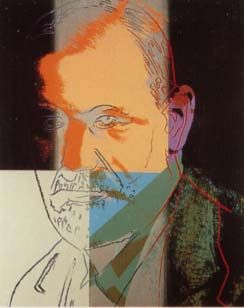
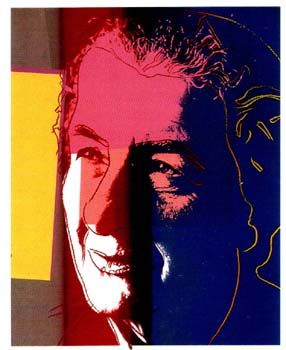
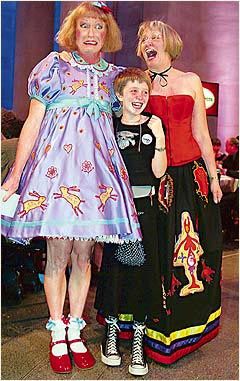
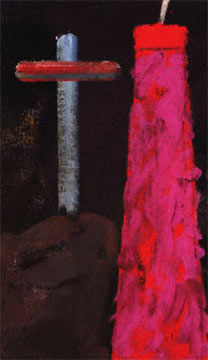


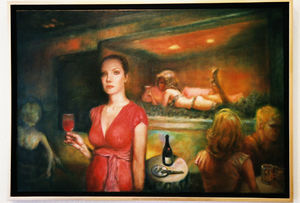

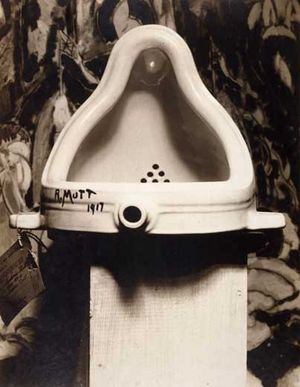


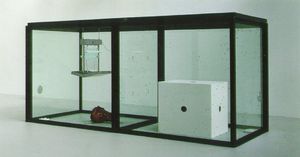
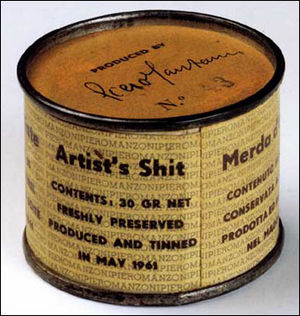


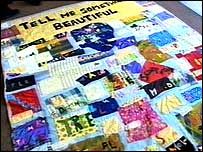
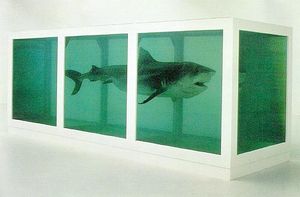



Now do one about comics and cartoons! Please!
ReplyDelete